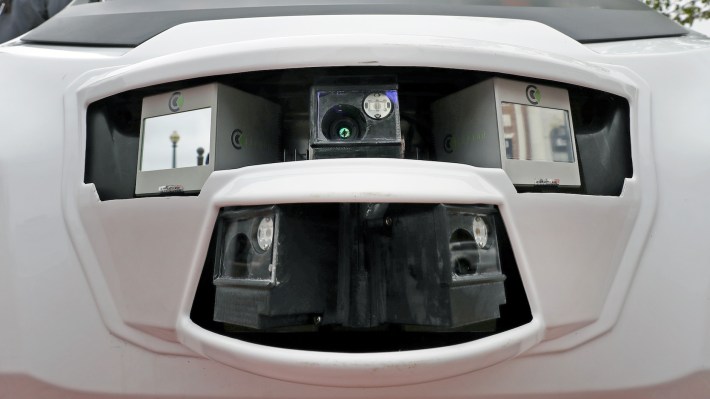May Mobility has raised hundreds of millions from some of the biggest names in the auto industry, but if you haven’t heard of the autonomous vehicle startup yet, that’s apparently by design.
The Toyota- and BMW-backed company builds autonomous vehicle systems like Cruise and Waymo. Yet, it’s dodging the fire those companies are under by focusing on “multi-year, multi-million dollar contracts” with mid-size cities, where it replaces “underperforming buses” with AV fleets, May Mobility’s Edwin Olson told TechCrunch.
“We’re not building 500 vehicles at a time and dropping them off in San Francisco,” said the CEO and co-founder in a call. The company is growing slower than those better-known AV companies, but Olson argues May Mobility can “reach profitability much, much earlier, and a lot more sanely than what the lift would be for a Cruise or Waymo to reach profitability, just because their burn rate means they have to deploy so many cars,” Olson said.
May Mobility may be onto something, but the company’s also hit on a convenient framing for itself; rapid expansion would require a whole lot more capital than the $300 million that May Mobility has raised to date, including $105 million in new funding it announced this week.
So far, GM’s Cruise and Alphabet’s Waymo have bet on a step change. In cities like SF and Los Angeles, their robotaxi rollouts have faced criticism from mayors, councilmembers, labor advocates, rideshare drivers, cops and firefighters, some of whom argue that AV tech isn’t ready and threatens jobs. Cruise, in particular, is under scrutiny. The company paused its driverless operations everywhere, and the DMV and California Public Utilities Commission pulled its driverless operating permits, after one of its autonomous vehicles dragged a pedestrian — who was first hit by a human driver — 20 feet.
Quiet, for now
May Mobility’s go-to-market strategy is to sell driverless vehicles — specifically Toyota Sienna minivans with AV tech — in a “geofence, on the scale of where [one or two bus routes] might operate,” Olson said. The company’s B2B business model allows it to keep relatively quiet, for now, because it’s selling to cities instead of individual riders.
This “makes the most sense today,” Olson said, citing current driverless tech limitations and vehicle costs. But May Mobility still wants to do some of the same things Cruise and Waymo do; it just isn’t starting there.
As AV tech advances and cheapens, Olson said other segments will open up for the company, “whether it’s trucking or logistics or robotaxis.” That means the company will, eventually, draw the attention of robotaxi opponents, particularly on the labor side; for example, Teamsters union leaders argue that AV companies intend to eliminate truck and bus driver jobs after they’ve proved their case in ride hailing.
Though it sounds like it’s waiting in the wings, May Mobility is in expansion mode. The company recently announced deals in Ann Arbor, Michigan (May Mobility HQ); Arlington, Texas; Detroit, Michigan; Grand Rapids, Minnesota; and Sun City, Arizona. The company said it’ll also arrive just east of San Francisco “by early 2024,” in Contra Costa County. A spokesperson for May Mobility, Allie Potter, hinted that it will head to the Southeast “in the coming months,” and that Californians can expect additional launches in the state down the line.
To get there, the AV firm recently secured a $105 million Series D led by Japan’s telecom giant NTT. May Mobility said Toyota Ventures, BMW i Ventures, Trucks VC and State Farm Ventures also participated in the deal, among other investors. To date, the company’s raised around $300 million.
